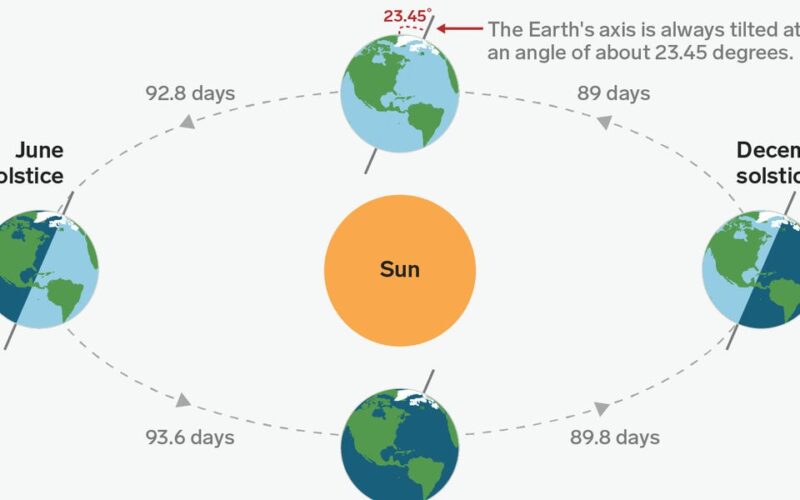The first day of fall, also called the autumnal equinox, arrives on Sunday and brings a change of seasons.
Also called the September or fall equinox, the day heralds the start of autumn for the Northern hemisphere, which houses about 90% of Earth’s population. Starting Sunday, they’re headed towards colder and darker days.
Matt Cardy/Getty Image
For the southern hemisphere, this equinox rings in the opposite season: the beginning of spring.
There are two reasons for these all-important seasonal shifts: the Earth’s tilted axis and the planet’s orbit around the sun.
How the fall equinox works
In June and December, the Earth hits its solstices — the longest and shortest days of the year.
And twice a year, in March and September, the Earth reaches its equinoxes, meaning the days and the nights are roughly the same lengths of time.
Shayanne Gal/Business Insider
Why? Well, let’s start with some basic physics.
The sun rises and sets each day because our planet is spinning on its axis. Meanwhile, it takes about a year — around 365 days, 5 hours, 59 minutes, and 16 seconds to be more precise — for the Earth to complete an orbit around the sun.
But there’s a hitch: The Earth’s axis isn’t completely squared up with the plane of its orbit around the sun. Instead, the axis is slightly tilted to one side, by about 23.5 degrees (for now).
That means the sun’s rays hit different parts of the world at different angles, depending on the time of the year.
During the Northern hemisphere’s summer, the Earth is tilted towards the sun, meaning more sunlight can hit the Earth and it can warm up the atmosphere. But when the Earth is tilted away, during the winter, less sunlight hits the Earth, and the atmosphere is cooler.
During an equinox, however, the Earth squares up perfectly with the sun’s warming rays. That means that the most intense sun rays hit the Earth straight on the equator, and the day and the night last about the same amount of time.
This year, this will happen at precisely 8:43 a.m. ET.
To illustrate what’s going on during an equinox, planetary scientist James O’Donoghue created an animation (below). O’Donoghue, who works at the Japan Aerospace Exploration Agency, also included the summer and winter solstices.
James O’Donoghue
If you were to stand directly on the equator at the moment the equinox peaks, the day would last about 12 hours and six-and-a-half minutes. The sun would appear more or less directly overhead, and your shadow would also be as small as it would ever be.
But this moment doesn’t last, since the Earth makes its way around the sun at a speed of roughly 66,600 mph.
Uneven seasons
Our planet’s orbit around the sun isn’t a perfect circle. It is actually slightly elliptical (oval-shaped, basically), and its center of gravity is slightly offset from the sun, so the time it takes to cycle through the seasons isn’t perfectly divvied up.
Reuters
About 89 days and 19 hours after the fall equinox, the Earth will reach its winter solstice — when the most direct sunlight strikes the Southern Tropic (or Tropic of Capricorn). Another 89 days later, the spring or vernal equinox will occur.
Then it’s another 93 days and 18 hours to the summer solstice — when the most direct rays of the sun reach their northernmost latitude, called the Northern Tropic (or Tropic of Cancer) — and another 92 days and 16 hours to get back to the fall equinox.
Celebrating equinox
For some, the fall equinox is more than the return of the pumpkin spice latte. It has marked the arrival of the harvest season for many throughout human history and several cultures still mark the event today.
One example is at Stonehenge in the UK, where pagans and druids gather around the monolithic structure to watch the sun rise over the stones.
This story was originally published in September 2019 and most recently updated on September 20, 2024. Dave Mosher contributed to a previous version of this article.
Source link
lol

